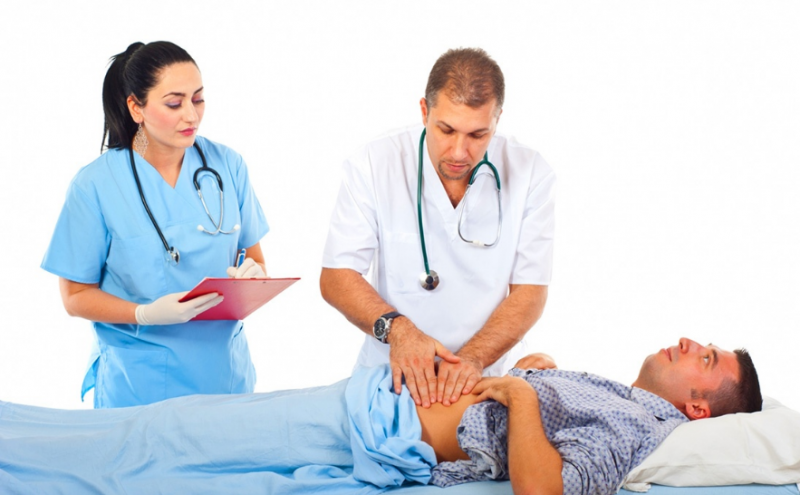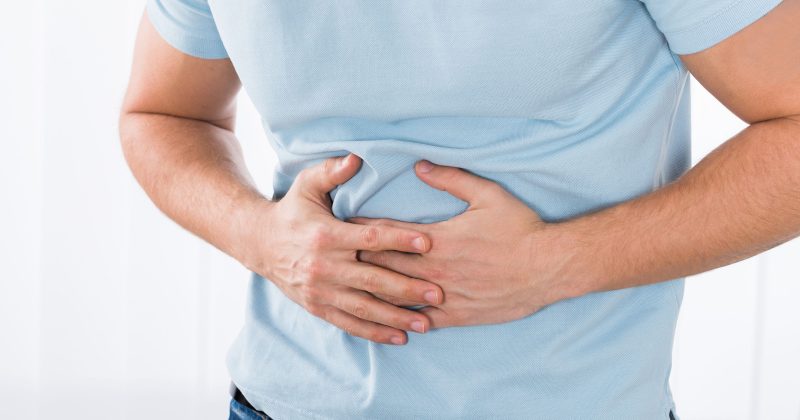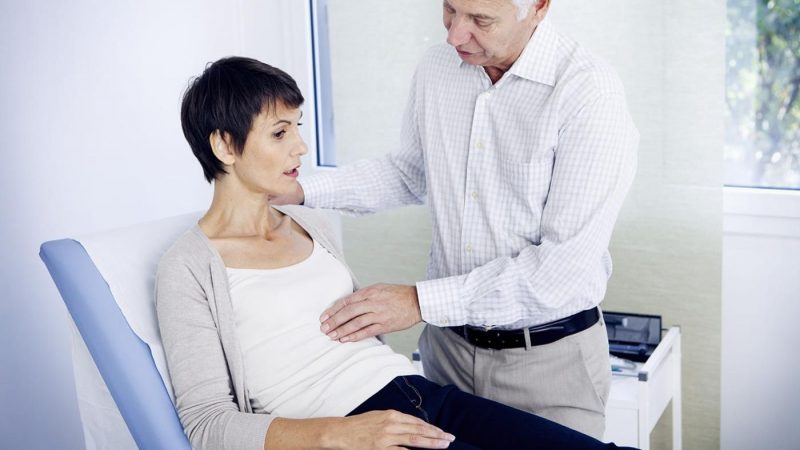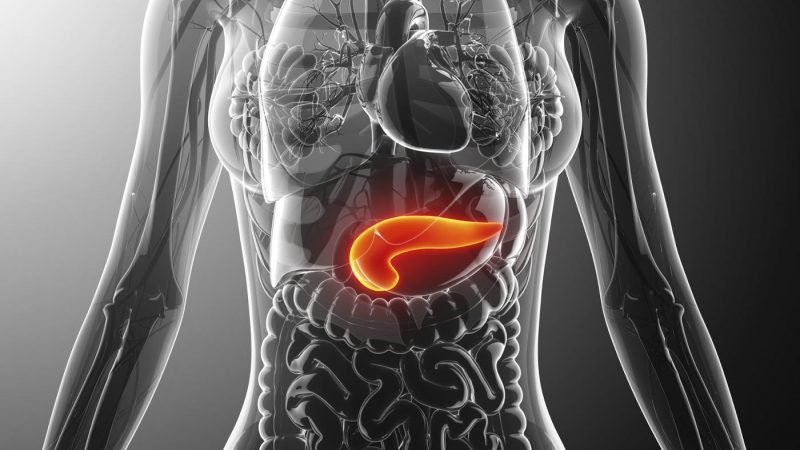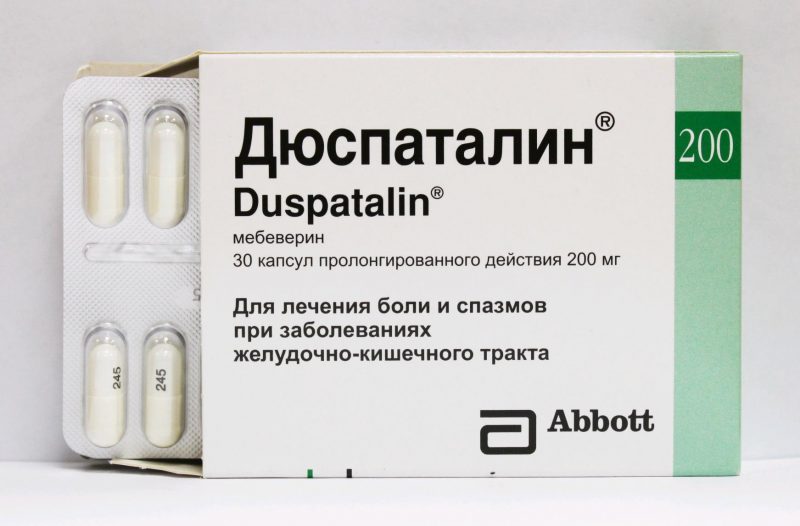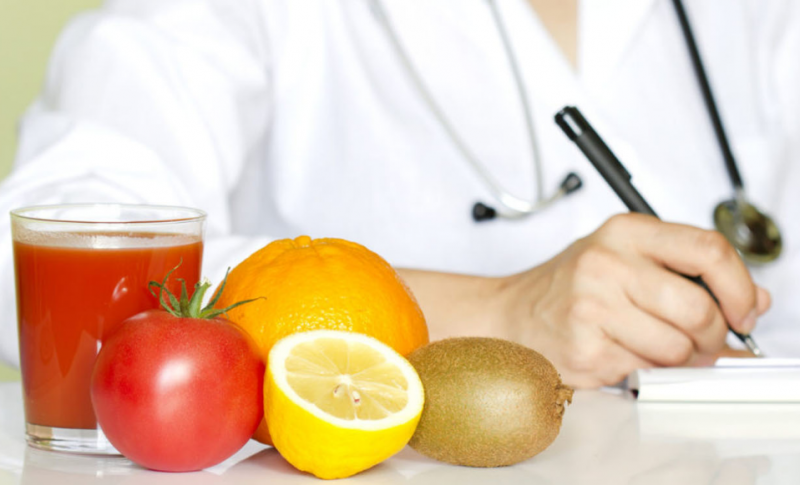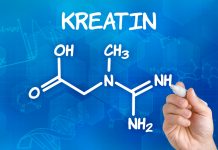Acute inflammation of the digestive gland begins with a pain attack, while chronic inflammation lasts for years with relapses and periods of well-being. Symptoms and treatment of pancreatitis in adults are determined by the severity of organ dysfunctions and the course of the disease. Complex therapy, a sparing diet and the prevention of pain attacks will be required.
Material Content:
The main causes of pancreatitis
The pancreas is a drop-shaped organ located to the left of the stomach. Functions are the secretion of digestive enzymes, the synthesis of insulin and glucagon.
Causes of inflammatory gland disease:
- infections (viral hepatitis, mumps, HIV);
- exposure to toxic substances, certain drugs;
- lesions of other digestive organs;
- abdominal injuries.
Overeating, alcohol abuse often become the conditions for the development of acute pancreatitis. The inflammatory process sometimes develops during pregnancy, due to a deficiency of proteins and vitamins. Symptoms of pancreatitis can appear 6 to 12 hours later or 1 to 2 days after drinking a lot of alcohol.
Some people develop increased pancreatic sensitivity, even to small doses of alcohol.
In gallstone disease, when a calculus gets stuck in the duct of the gallbladder, the enzymes are blocked in the gland.This condition is the cause of irritation and self-digestion of organ tissues.
The risk of the disease increases with cystic fibrosis - a hereditary lesion of the gland, hypercalcemia (high concentration of calcium ions), hyperlipidemia (high levels of fat in the blood). Hereditary predisposition, autoimmune diseases and abnormalities in the structure of the organ are also provoking factors.
Pancreatitis often affects men aged 30 to 40 years. The cause of this disease in women is often hormonal changes during pregnancy. Pancreatitis in children is a rare occurrence.
The clinical picture and symptoms
The most common inflammation of the gland, proceeding in a chronic recurring form. Clinically, pancreatitis is most often manifested by a strong and prolonged pain syndrome - from several hours to several days. Then comes remission, when the patient practically does not feel discomfort in the abdomen.
How does acute pancreatitis manifest
Severe, sudden, often bursting pain is a typical sign of this form of the disease. The condition worsens, painkillers almost do not help. The pain is localized in the upper abdomen (under the “spoon”), more often in the left hypochondrium, less often in the right.
Sometimes sensations are projected onto the back, girdle pain occurs.
Acute pancreatitis is accompanied by other signs:
- severe nausea;
- vomiting with the presence of bile;
- flatulence, diarrhea;
- decreased appetite;
- exhaustion;
- insomnia;
- depression.
Symptoms of pancreatitis also include increased heart rate, decreased blood pressure, fever (37 - 39 ° C), dehydration. The tongue becomes dry, the skin becomes pale or yellowed, droplets of cold sweat appear on the face and palms. The patient feels very ill, he needs urgent medical care.
Signs of a chronic form of the disease
The most important role in the development of permanent inflammation of the gland belongs to alcoholism, the consumption of fatty and smoked foods. Chronic pancreatitis is often the result of an acute illness. The pains are also localized in the upper part of the abdominal cavity, occur after a diet violation. In the vomit, an admixture of bile is detected, diarrhea appears. The chair has an oily consistency.
Symptoms are worse after eating fatty alcohol. However, with damage to the gland and loss of the ability to produce enzymes, pain may be absent.
Diagnostic Measures
The study of the medical history and a thorough physical examination are very important in determining the diagnosis. The doctor at the external examination of the patient notes characteristic symptoms, with the help of palpation determines that there is bloating, paresis of the gastrointestinal tract.
According to the results of a patient’s blood test, leukocytosis, a strong increase in amylase and lipase levels (gland enzymes) are detected. There is also an increase in the concentration of glucose and electrolytes.
Information about the state of the organ is obtained using ultrasound, endosonography, computed tomography.
Using modern devices allows you to identify the degree of damage to the gland, to detect the presence of calculi in the bile duct and its ducts.
Treatment Methods in an Adult
Compliance with bed rest is required for acute pancreatitis. They treat the disease in a hospital. With exacerbation of chronic inflammation, you should stay in bed in cases where severe pain is combined with vomiting. An attack does not always require hospitalization; you can be treated on an outpatient basis.
Medical preparations
Before going to the doctor you can take antispasmodics. Usually these are drugs containing drotaverin or mebeverin (for example, No-Shpa, Duspatalin, Niaspam, Sparex).
- For severe pain, a combination of antispasmodics with analgesics (Baralgin), combined drugs (Brahl, Spazgan) will be required.
- From nausea and vomiting take "Tserukal", "Omez", "Motilium."
- To reduce the production of hydrochloric acid in the stomach - "Famotidine".
In the hospital, a complex treatment of pancreatitis is prescribed. Used mainly infusion therapy with special drugs. Surgical intervention will be required for infection, rapidly progressive inflammation, necrosis of the gland. If acute pancreatitis is caused by a stone in the bile duct, then doctors suggest the removal of calculus and gall bladder.
The solution "Octreotide" for iv and sc administration is prescribed to suppress the production of hormones responsible for the enzymatic activity of the pancreas. Introduce strong analgesics, antispasmodic drugs, drugs that reduce the secretion of pancreatic juice with enzymes ("Gordoks", "Kontrikal"). Medicines that block the secretion of stomach acid (Omeprazole, etc.) help.
In chronic pancreatitis, enzymes are taken for a long time between relapses.
Used for replacement therapy, "Creon", "Mezim Forte", "Hermitage", "Festal", "Pancreatin." Enzyme preparations contain dried pancreatic juice (lipase, amylase and protease) obtained from the pancreas of pigs or cattle. The additional introduction of pancreatin promotes better digestion and absorption of nutrients, normalization of stool. If an exacerbation develops, then the intake of enzyme agents is stopped.
Folk recipes
Medicinal herbs that have choleretic, anti-inflammatory, antispasmodic, analgesic, antimicrobial effects help to treat pancreatitis. Medicinal plants are used individually, but more often in the form of mixtures (fees).
- In the initial stage of pancreatic inflammation, an infusion of the flowers of the Helichrysum sandwort, peppermint leaves, and fennel fruits is taken. Take all components in equal parts, grind and mix. Brew 4 tbsp. l collecting 500 ml of boiling water in a thermos. Dose at a time - ½ cup. Accepted 15 minutes before meals 3-4 times a day.
- The collection, which has an antispasmodic, analgesic and choleretic effect, is prepared from fennel seeds, mint leaves (3 tbsp. Each), hawthorn fruits, sandy immortelle flowers (2 tbsp. Each), chamomile baskets (1 part). For 250 ml of boiling water take 2 tbsp. l mixtures of herbs. Drink infusion in the form of heat three times a day before meals. Dose at one time - from ½ to 1 cup.
Plants with a wide spectrum of action in pancreatitis and associated gastrointestinal lesions: St. John's wort, oregano, yarrow, elecampane, corn stigmas, mint, plantain, lime blossom, chamomile.
They eliminate pain, heartburn, bloating, normalize stool. Infusions take 12 days, then take a break of 2 weeks and resume herbal medicine.
Features of the diet for different forms of pancreatitis
Doctors recommend for 1 to 3 days to refuse food in acute inflammation of the pancreas, so as not to create a load on the digestive tract. It is allowed to drink weak tea, a rosehip broth, table mineral water without gas. Next, diet No. 5 is prescribed.
- Eat easily digestible food without harmful fats.
- Exclude products that stimulate the formation of acid in the stomach and bile, which reduces the activity of the pancreas.
- A prerequisite for cure is gentle, fractional nutrition in small portions 5 to 7 times a day.
- Bread is recommended not fresh, but yesterday.
- Drink plenty of fluids, but caffeinated drinks should be limited.
Smoking and alcohol are prohibited even in the early stages of pancreatitis.
- It is undesirable to eat meat varieties, sausages, in which a high percentage of fat, connective tissue.
- It is necessary to limit salt and sugar.
- Under the ban fat, milk and cream, sour cream, marinade, smoked meats.
- It is advisable to avoid sour fruits, spicy vegetables.
With exacerbation of chronic pancreatitis, it is advisable to refuse food for 1 to 2 days.Then you can eat in small portions. It is necessary to exclude products that enhance bile secretion, irritating the pancreas.
Allowed low-fat boiled beef, rabbit, poultry (turkey, chicken). Allowed to eat low-fat fish. Meatballs, steam cutlets, soufflé are prepared.
Enzyme replacement therapy can enrich the diet.
Garnishes are recommended to be prepared from cereals (buckwheat, oatmeal, less often - barley, corn, semolina), pasta. You can cook porridge in water and diluted milk. It is recommended to add a little butter or vegetable oil to the side dish. Adhere to a strict diet after exacerbation for 9 months.
What could be the consequences
Pancreatitis is dangerous for serious complications. The consequences of acute inflammation are a purulent process and necrosis of the gland tissue. Perhaps the appearance of erosion of the gastrointestinal tract, bleeding, peritonitis.
Relapses of a chronic disease in the absence of adequate treatment lead to the replacement of the glandular connective tissue. A lack of enzymes causes disturbances in the digestion and absorption of nutrients.
The destruction of beta cells producing insulin leads to the development of diabetes.
With sclerosing pancreatitis, irreversible changes in the pancreas occur. A consequence of chronic inflammation can be calcification - deposits of insoluble calcium salts. A very serious complication is adenocarcinoma - a malignant tumor of the gland.
How to avoid the appearance of the disease
Proper nutrition, refusal of alcohol - the best prevention of inflammation of the pancreas. The risk of pancreatitis decreases with low cholesterol, as this prevents the formation of gallstones.
Useful foods and drinks that contain antioxidants. These are green tea, vegetables and fruits of red, orange, purple and dark green. Relaxing warm baths with herbs and essential oils at bedtime stimulate digestion and improve the condition of the pancreas.


